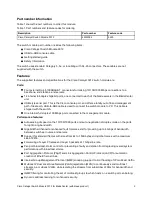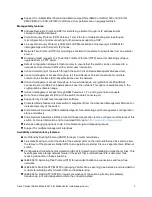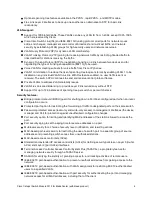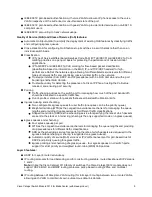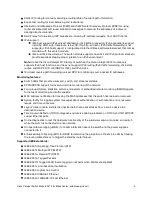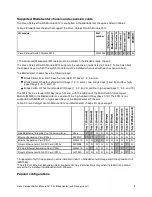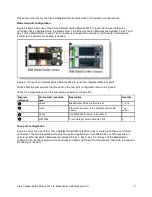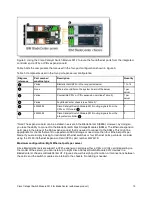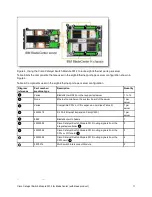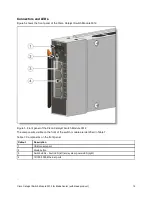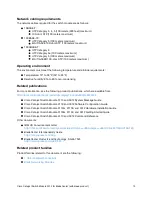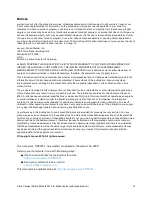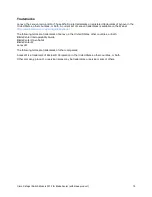
IEEE 802.1X port-based authentication with voice VLAN to allow an IP phone access to the voice
VLAN irrespective of the authorized or unauthorized state of the port.
IEEE 802.1X port-based authentication with guest VLAN to provide limited services to non-802.1X-
compliant users.
IEEE 802.1X accounting to track network usage.
Quality of Service (QoS) and Class of Service (CoS) features:
Automatic QoS (auto-QoS) to simplify the deployment of existing QoS features by classifying traffic
and configuring egress queues.
Cross-stack QoS for configuring QoS features to all switches in a switch stack rather than on an
individual-switch basis.
Classification
IP Type of Service/Differentiated Services Code Point (IP ToS/DSCP) and IEEE 802.1p CoS
marking priorities on a per-port basis for protecting the performance of mission-critical
applications.
IP ToS/DSCP and IEEE 802.1p CoS marking for flow-based packet classification
(classification based on information in the MAC, IP, and TCP/UDP headers) for high-
performance QoS at the network edge, allowing for differentiated service levels for different
types of network traffic and prioritizing mission-critical traffic in the network.
Trusted port states (CoS, DSCP, and IP precedence) within a QoS domain and with a port
bordering another QoS domain.
Trusted boundary for detecting the presence of a Cisco IP Phone, trusting the CoS value
received, and ensuring port security.
Policing
Traffic-shaping policies on the switch port for managing how much of the port bandwidth
should be allocated to a specific traffic flow.
Out-of-profile markdown for packets that exceed bandwidth utilization limits.
Ingress queuing and scheduling
Two configurable ingress queues for user traffic (one queue can be the priority queue).
Weighted tail drop (WTD) as the congestion-avoidance mechanism for managing the queue
lengths and providing drop precedences for different traffic classifications.
Shaped round robin (SRR) as the scheduling service for specifying the rate at which packets
are sent to the stack or internal ring (sharing is the only supported mode on ingress queues).
Egress queues and scheduling
Four egress queues per port.
WTD as the congestion-avoidance mechanism for managing the queue lengths and providing
drop precedences for different traffic classifications.
SRR as the scheduling service for specifying the rate at which packets are dequeued to the
egress interface (shaping or sharing is supported on egress queues).
Automatic quality of service (QoS) voice over IP (VoIP) enhancement for port-based trust of
DSCP and priority queuing for egress traffic.
Egress policing and scheduling of egress queues - four egress queues on all switch ports;
support for strict priority and weighted round-robin (WRR) CoS policies.
Layer 3 features:
HSRP for Layer 3 router redundancy.
IP routing protocols for load balancing and for constructing scalable, routed backbones RIP Versions
1 and 2.
Note: Unlike the Cisco Catalyst 3110 family of switches, the Cisco Catalyst 3012 module does not
support OSPF, BGP, and EIGRP routing protocols, policy-based routing, VPNs, and multicast
routing,
IP routing between VLANs (inter-VLAN routing) for full Layer 3 routing between two or more VLANs,
allowing each VLAN to maintain its own autonomous data-link domain.
Cisco Catalyst Switch Module 3012 for BladeCenter (withdrawn product)
5


